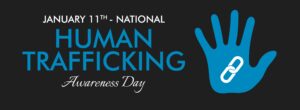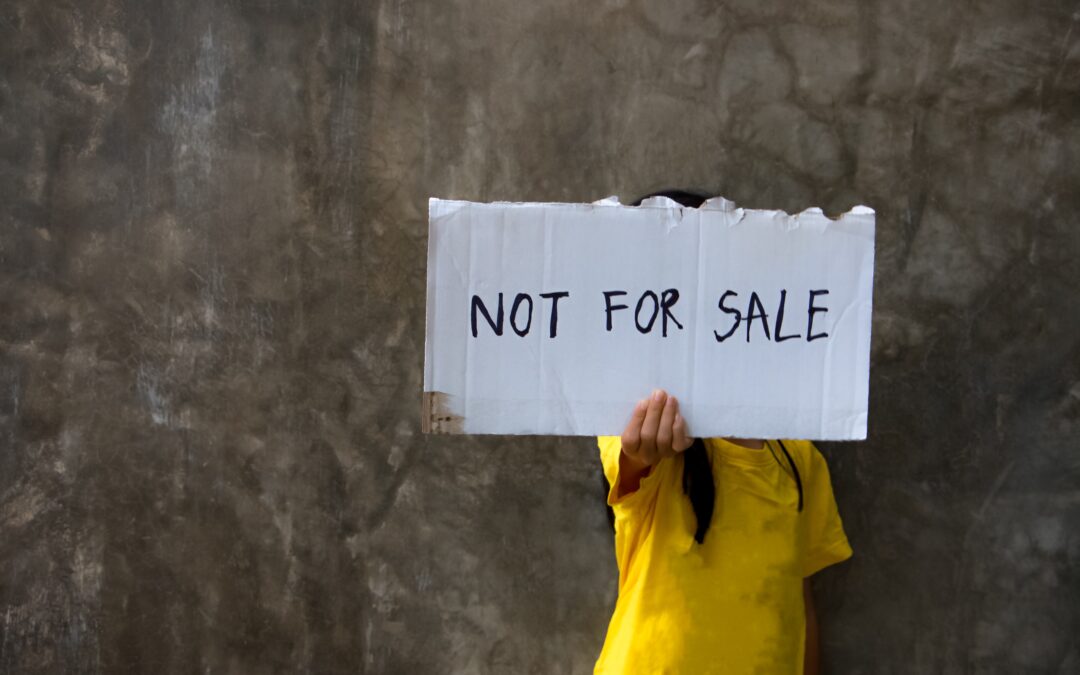Every year on January 11, National Human Trafficking Awareness Day serves as a crucial reminder of the hidden epidemic of human trafficking. This modern form of slavery affects millions of people worldwide, exploiting their vulnerability and robbing them of their basic human rights. One aspect often overshadowed is the intricate relationship between human trafficking and drug addiction. In this comprehensive guide, we will explore the significance of National Human Trafficking Awareness Day, shed light on the links between human trafficking and drug addiction, and discuss how awareness and support can make a difference in the lives of survivors.
National Human Trafficking Awareness Day: A Call to Action
 National Human Trafficking Awareness Day was established to raise public awareness about the crime of human trafficking and its impact on individuals, families, and communities. Here are some key reasons why this day is essential:
National Human Trafficking Awareness Day was established to raise public awareness about the crime of human trafficking and its impact on individuals, families, and communities. Here are some key reasons why this day is essential:
- Bringing the Issue to Light: Human trafficking often occurs in the shadows, making it challenging to detect and combat. Awareness day serves as a spotlight on this pervasive issue.
- Empowering Advocacy: By raising awareness, National Human Trafficking Awareness Day empowers individuals, organizations, and governments to take action, support survivors, and enact stronger anti-trafficking policies.
- Supporting Survivors: It’s an opportunity to honor and support survivors of human trafficking while providing them with the resources and care they need to rebuild their lives.
The Interconnection: Human Trafficking and Drug Addiction
The relationship between human trafficking and drug addiction is multifaceted, with addiction often serving as both a catalyst and a consequence of trafficking:
1. Vulnerability Exploitation
a. Targeting Vulnerable Individuals: Traffickers often prey on individuals who are already vulnerable, such as those struggling with addiction. Addiction can make someone more susceptible to manipulation and coercion.
b. Offering False Relief: Traffickers may offer drugs as a means of control or comfort to their victims, exploiting their addiction to maintain control.
2. Human Trafficking as a Drug Market
a. Drug Trafficking: Human trafficking can intersect with the drug trade, as traffickers may force victims to engage in drug-related activities, such as transporting or selling drugs.
b. Supply Chains: Victims of trafficking may be used within the drug supply chain, from cultivation to distribution, further entangling their lives with addiction.
3. Coping Mechanism
a. Self-Medication: Victims of trafficking may use drugs as a coping mechanism to numb the pain, trauma, and fear associated with their exploitation.
b. Cycle of Addiction: Addiction can become a vicious cycle, as victims may continue to use drugs as a way to manage the psychological and physical trauma of trafficking.
4. Control and Manipulation
a. Dependency: Traffickers may intentionally get victims addicted to drugs to maintain control over them. This dependency makes it more challenging for victims to escape or seek help.
b. Coercion: Traffickers may use the threat of withdrawal or the promise of drugs as a tool of coercion to keep victims compliant.
Addressing the Complex Intersection
Combatting the intersection of human trafficking and drug addiction requires a multidimensional approach, involving various stakeholders:
1. Raising Awareness
a. Public Education: National Human Trafficking Awareness Day plays a vital role in educating the public about the signs of human trafficking and its connection to drug addiction.
b. Identifying Victims: Awareness campaigns can help community members and professionals identify potential victims and provide them with the assistance they need.
2. Support for Survivors
a. Trauma-Informed Care: Survivors of human trafficking often experience severe trauma. Trauma-informed care that addresses both addiction and trauma is crucial.
b. Rehabilitation Programs: Comprehensive rehabilitation programs should be made available to survivors, addressing both their addiction and their experiences of trafficking.
3. Prevention and Intervention
a. Targeting Vulnerability: Prevention efforts should focus on addressing the vulnerabilities that make individuals susceptible to trafficking, such as addiction.
b. Outreach to At-Risk Populations: Outreach programs should target at-risk populations, providing support and resources to those in need before they fall prey to traffickers.
4. Law Enforcement and Legal Measures
a. Investigative Efforts: Law enforcement agencies must receive training to recognize signs of human trafficking and its links to drug addiction.
b. Legal Protections: Legal measures should be in place to protect survivors and hold traffickers accountable for their actions.
5. Collaboration and Partnerships
a. Interagency Cooperation: Government agencies, non-profit organizations, healthcare providers, and law enforcement agencies should collaborate to address the complex issues surrounding human trafficking and drug addiction.
b. International Efforts: Given the global nature of human trafficking and drug trade, international cooperation is essential in combatting these interconnected issues.
National Human Trafficking Awareness Day is a powerful reminder
National Human Trafficking Awareness Day is a powerful reminder of the pervasive issue of human trafficking and the lives it impacts. By understanding the complex relationship between human trafficking and drug addiction, we can better address the needs of survivors and work towards prevention and intervention. It is our collective responsibility to shine a light on this issue, support survivors on their path to recovery, and advocate for policies and initiatives that address the intricate intersection of trafficking and addiction. Together, we can make a difference in the lives of those affected by these interrelated challenges.

